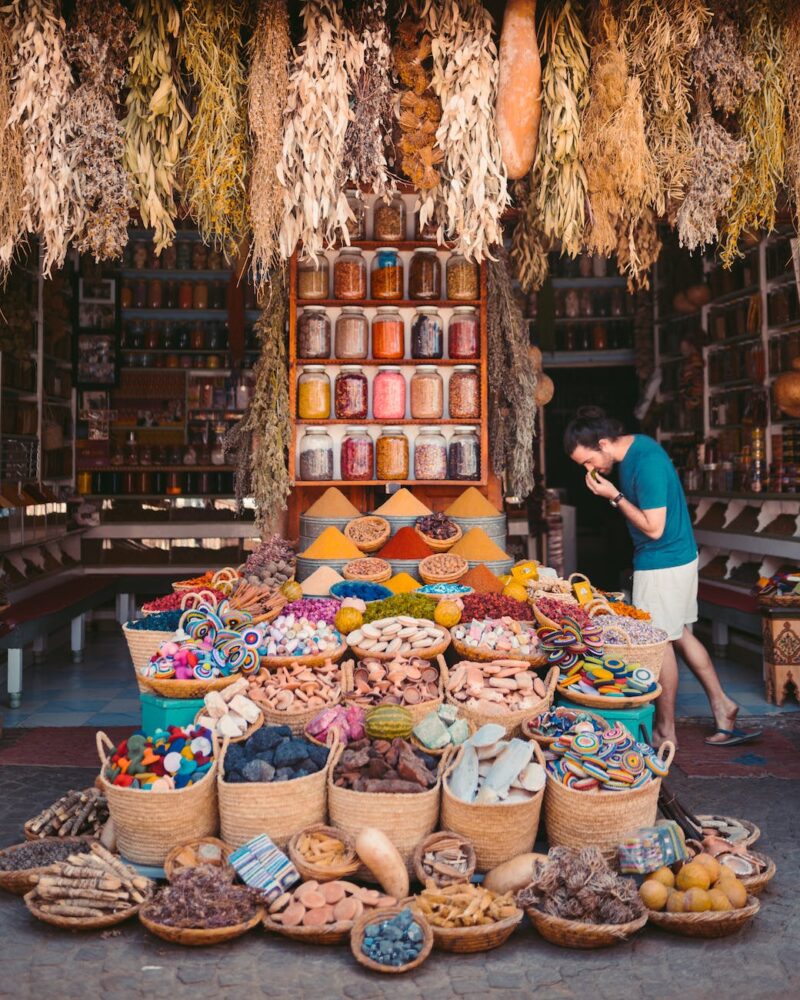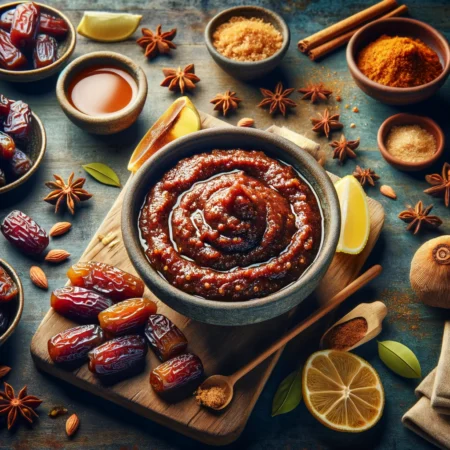The tagine is a traditional Moroccan dish that is named after the type of clay pot in which it is cooked. The tagine pot has a cone-shaped lid and is used to slow-cook a variety of meats, vegetables, and spices over low heat. The dish is typically served with couscous, a type of steamed semolina grain.
The tagine is central to Moroccan cuisine for a number of reasons. First and foremost, it is a versatile dish that can be made with a wide variety of ingredients, including lamb, chicken, beef, and vegetables. This makes it a popular choice for both everyday meals and special occasions.
In addition, the tagine pot is well-suited to the climate and cooking conditions in Morocco. The cone-shaped lid allows steam to condense and drip back down onto the food, keeping it moist and tender during the cooking process. The clay pot also helps to regulate the temperature of the dish, keeping it warm for long periods of time.
Finally, tagine is an important part of Moroccan culture and social customs. It is often served communally, with diners scooping the food out of the pot and onto a platter or onto individual plates. Sharing a tagine is a social and cultural experience that is central to Moroccan cuisine and hospitality.
There are many different types of tagine, with a wide variety of ingredients and flavours. Some of the most common types of tagine include:
- Chicken tagine: This classic tagine is made with chicken, olives, and preserved lemons, and is often served with couscous.
- Lamb tagine: This hearty tagine is made with lamb, vegetables, and a variety of spices, such as cumin, coriander, and paprika. It is often served with couscous or bread.
- Vegetable tagine: This vegetarian-friendly tagine is made with a variety of vegetables, such as zucchini, bell peppers, and eggplant, and is often flavored with spices like cumin and coriander.
- Fish tagine: This tagine is made with fish, such as cod or haddock, and is often flavored with saffron and other aromatic spices.
- Beef tagine: This tagine is made with beef, typically slow-cooked with vegetables and a variety of spices.
- Fruit tagine: This sweet and savory tagine is made with a variety of fruits, such as apricots, plums, and figs, and is often served as a dessert.
Each type of tagine is typically made with a unique blend of spices and ingredients, giving it a distinct flavour profile. The specific ingredients and flavours used can vary widely depending on the region and cultural traditions of the people preparing the dish.
When shopping for a good quality tagine, there are a few key factors to consider:
- Material: Traditional tagines are made from clay, and are often glazed with a decorative finish. Clay tagines are well-suited to slow cooking and help to regulate the temperature of the dish, but they can be fragile and require careful handling. There are also tagines made from other materials, such as ceramic, enamelled cast iron, and stainless steel. These options may be more durable and easier to care for, but they may not provide the same level of heat regulation as clay tagines.
- Size: Consider the size of the tagine and the amount of food you will be cooking. A larger tagine may be more suitable for bigger families or for entertaining, while a smaller tagine may be more practical for everyday use.
- Lid: Look for a tagine with a well-fitting lid, as this will help to keep the steam and heat inside the pot during the cooking process. A cone-shaped lid is traditional, but some modern tagines have a flat or domed lid.
- Handle: Consider the type and placement of the handles on the tagine. Some tagines have handles on the sides, while others have a single handle on the top. Handles on the sides may be more practical for serving, while a handle on the top may be easier to grip when lifting the heavy pot.
- Condition: Look for a tagine that is in good condition, with no cracks or chips. If you are buying a used or antique tagine, make sure to inspect it carefully for signs of damage or wear.
By considering these factors, you can find a good quality tagine that will serve you well in the kitchen.
There are many companies that make high-quality tagines. Some of the top brands to consider include:
- Emile Henry: This French company makes a wide range of ceramic kitchenware, including tagines. Their tagines are made from high-quality ceramic that is resistant to thermal shock and can go from the stovetop to the oven.
- Le Creuset: This French company is well-known for their enameled cast iron cookware, including tagines. Their tagines are made from durable cast iron with a glossy enamel finish and come in a variety of colours.
- All-Clad: This American company makes a range of stainless steel kitchenware, including tagines. Their tagines are made from high-quality stainless steel and have a tri-ply construction for even heating.
- Staub: This French company is known for their cast iron cookware, including tagines. Their tagines are made from durable cast iron and have a matte black enamel finish that is resistant to chipping and scratching.





